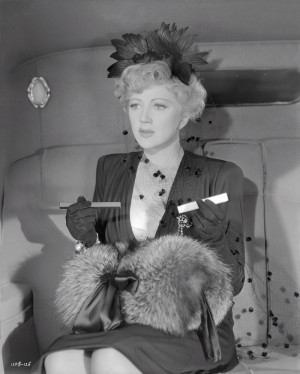Stella Adler: The Actor’s Oracle
That company is made up of the hard-hitting giants of American theatre and the key to their plays is simply that “no religion is fixed, no family is fixed, no property is fixed.” A few examples are worth noting. In Long Day’s Journey Into Night (a play too painful for the writer to see produced until after his death), Adler sees O’Neill peering into man’s inner chaos. “Nobody knows what’s wrong. The text has something mystical about it…there is nothing real outside, that is where I want to be — somewhere out in the fog.” On Tennessee Williams’ characters, she tells us, “They don’t really want to find out who they are. They cannot face the reality. They run away from it.” According to Adler, he captivates us because of the way in which they escape the filth and frustration. In Death of a Salesman, Adler illuminates Willy Loman’s tragedy for us. “He pretended to be important in order to get the respect of his family, and his own self respect.” The anxiety is constant. This is post WWII industrialist world and she draws a clear picture of it. “There’s no space or blade of grass for Willy to come back to and sit down, open up the paper, smoke a cigarette, watch the sun go down. That kind of life just doesn’t exist anymore.”
What gave this woman such authority, you might ask. Born February 10, 1901, she was the youngest child of Sara and Jacob P. Adler, members of a Lower East Side dynasty of Yiddish theatre, plying her trade from the age of four. By age 18, she made her London debut before returning to New York. In 1931, she joined the Group Theatre, founded by Harold Clurman, Lee Strasberg and Cheryl Crawford. Unlike the prevailing devotees to the Method, she advocated bringing the imagination into play. “Use your creative imagination to create a past that belongs to the character. I don’t want you to be stuck with your own life. It’s too little.”
She was the only American to study acting with the acclaimed Russian director, Constantin Stanislavski. A six year stint in Hollywood as an actress under the name Ardler (Warner Brothers felt Adler wouldn’t play on the marquee in the South), she returned to New York to teach and the Stella Adler Studio of Acting was founded in 1949. She continued to teach up to the last, and died December 21, 1992 at the ripe age of 91. Among the long list of celebrated students, none looms larger than Marlon Brando. He believed that she imported the most valuable kind of information: “How to discover the nature of our own emotional mechanics and therefore, those of others.” Her charisma remained its own mystery and was entirely her own.
Paris doesn’t dwell on Adler’s personal biography. Instead he relies on her confessional, sometimes inflated, sometimes deprecatory anecdotes in the lectures themselves. With a little patience, the curious reader will find plenty of examples to satisfy. For the true theatre buff, an earlier volume, also edited by Paris, Stella Adler on Ibsen, Strindberg and Chekhov is available in paperback.
It’s not easy to be a serious actor. It’s even harder to be a good one. It’s little wonder that Adler admonished so many followers to “get beneath the words before you can say them.” To those who listened carefully enough to this modern-day oracle, she divulged the way.
Afterword
One summer in the late ’60s, I had the opportunity of taking an advanced scene study class with Stella Adler at her studio on Melrose Avenue in West Hollywood. I will always feel indebted to Adler’s infallible assistant, Irene Gilbert, who helped to organize the West Coast operation and encouraged me to audition for the great lady herself. Needless to say, by that time Adler had become an indispensable guru to many actors and would-be actors. They came and clung to her every word like moths to the flame — including a favorite of hers, Warren Beatty, who hung back one night in the front lobby with his black horned rim glasses, awaiting an audience with the real star of the evening.
In my class, there were those of us that were the unknown with big aspirations, including myself and another young actress friend from Kansas, named Sara Jane Brown. Sara had no tricks up her sleeve then, in other words, technique, and I had perhaps too many I’d adopted too quickly from minor productions. We performed scenes for our teacher and were quickly brought down to size. I was told to “get rid of all that crap” and maybe we could work together. As for Sara, she was told in no uncertain terms, “you can’t just act with those big brown cow eyes.” We had our time to perform for her, along with other members that summer that included an eclectic lot if there ever was one — a beautiful Italian actress named Gia Scala who had starred in a Gregory Peck blockbuster, The Guns of Navarone (1961); a hairdresser and fourth husband of Judy Garland’s; and an Asian girlfriend of Marlon Brando’s who was whisked away after class in a black limo that shielded our eyes from the passenger inside. What I remember most was not the failure or success of our own performing but Stella’s performance — pacing back and forth in front of our seats in that small playhouse, dividing her gaze outward when not at the class, no doubt toward some rarified thought; expounding on acting, the theatre, but most of all, life through the prism of the play. She was an incendiary force of nature, and always made you feel if you got too close to her with a match, she would go up instantly in a blinding blaze.











